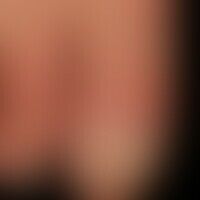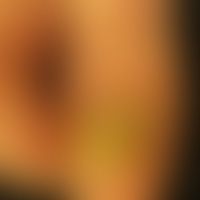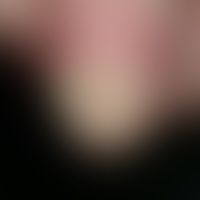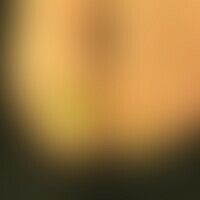
Nail pitting due to psoriasis L60.8
Spotted nails: unusually pronounced, dimpled nail dystrophies in known psoriasis; keratotic changes of the cuticle.

Yellow-nail syndrome L60.5
Yellow-nail syndrome: yellowishdiscolored and evenly thickened nails (scleronychia).

Psoriasis of the nails L40.8
psoriasis of the nails. severe onychodystrophy with wave-like transverse ligament with simultaneous psoriatic attack of the nail wall (paronychium). missing eponychium (cuticle). partially crumbly nail matrix on the nail surface as well as on the distal edge. no pain symptoms.

Onychogrypose L60.2
Onychogrypose in psoriasis: completely changed growth direction of the big toe nail, now only vertically oriented.

Onychogrypose L60.2
Onychogrypose: for several years, a yellowish, bulging, yellowish big toe nail in a 16-year-old boy; traumatic etiology (soccer game).

Psoriasis of the nails L40.8
Psoriasis of the nails: circumscribed damage to the nail root with alteration of the cuticle, marked by arrows and crossbars. Oval circles around an onycholysis area. The marked crossbars denote so-called Beau-Reilsche transverse furrows.
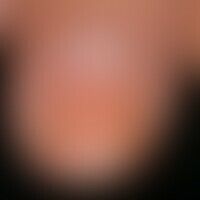
Onycholysis drug-induced or light-induced T88.7

Onychomycosis (overview) B35.1
Tinea unguium: distal, yellow-brown subungual discoloration with dystrophy of the nail in a 68-year-old diabetic; positive fungal culture.

Psoriasis of the nails L40.8
Psoriasis of the nails: combined psoriatic onychodystrophy with spotting, oil stain and onycholysis, see following figure

Trachyonychia L60.8
Trachyonychia: rough, lackluster, otherwise symptom-free nail surfaces in Alopecia areata totalis.

Nail diseases (overview) L60.8
Yellow-nail syndrome: yellow thickened nails with Beau-Reilscher transverse furrow.

Psoriasis vulgaris L40.00
psoriasis vulgaris. psoriasis of the nails. subungual and ungual infestation, here with parakeratotic keratinization

Onychomycosis (overview) B35.1
Distal onychomycosis with crumbly destruction of the nail matrix; discrete, aphlegmatic tinea of the finger skin with slight scaling.

Psoriasis of the nails L40.8
Psoriasis of the nails: pronounced subungual psoriasis (oil stain), recognizable by a translucent discoloration of the nail plate, which is caused by parakeratotic keratinization.

Onychogrypose L60.2
Onychogrypose (complicatively superimposed): moderately pronounced onychogrypose in an 18-year-old soccer player's ring, here complicatively superimposed by onychomycosis, recognizable by the yellowish streaky discoloration
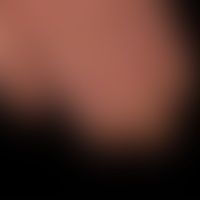
Paronychia chronic L03.0
chronic paronychia: existing for months (physiological growth of the fingernail about 0.10 to 0.12 mm per day), slightly painful paronychia with growth disturbances of the nails. nail fold (encircled) reddened and swollen. moderate pain under pressure. from time to time a purulent secretion empties under pressure. cuticles completely missing.
